Reception: ![]() +36/30 show
+36/30 show
6721 Szeged, Osztrovszky utca 12.
Open every week-day since 1996
Open on week-days from 8 AM to 9 PM
24 578 satisfied customers
Serving you since 1996
As with other medical areas, permanent technological development is especially true for dentistry. Modern dentistry is unconceivable without different types of laser devices.
At Dentha Dentistry, the comfort and health of the patients are supported by the complete Biolase bio-laser product family, which opens up new dimensions in the world of dentistry: the Biolase iLase and Biolase Epic diode soft laser systems and the Biolase Waterlase hard laser system to process soft tissues (such as the gum) and hard tissues (such as dental enamel, dentin and bone), respectively. The latter is also known as the “Ferrari of dentistry”, something that, let’s admit to ourselves, we all crave for.
And this system is accessible to all at Dentha Dentistry.
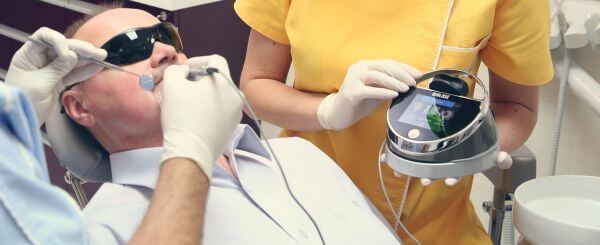
The Biolase Epic diode laser system is primarily used to perform laser teeth whitening, biological stimulation and soft tissue and periodontal plastic surgeries. If necessary, an anaesthetic will be administered for these laser treatments.
The other name of the small iLase is “penlase” because of its feather shape. The advantage of this system is its small size and therefore is easily portable. We perform the same interventions as with Biolase Epic.
The “Ferrari of dentistry”, that is, Biolase Waterlase iPlus combines the energy of three elements: the power of the laser beam, water and air. This laser beam has a direct effect on the water molecules, and thus, the changes in the tissues are caused by the bursting of the water molecule under the impact of the laser beam. This laser beam is used to perform painless tooth drilling in order to remove the carious part. In addition, it is used to carry out oral surgery interventions and preparation.
vissza a kérdésekhez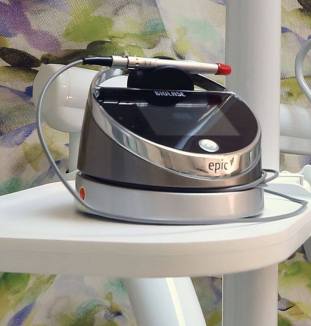
Very few people know that the effect on the dentin (dental pulp) when experiencing tooth pain is transmitted to the nerves through the fluid in the dentin tubules. The heat, vibrations and pressure caused by the drill lead to pain through this fluid. Waterlase prevents this pain transmission mechanism without an anaesthetic injection by drying up the fluid in the tubules. The dehydration of this fluid leads to the formation of different salts, which prevents the pain sensation reaching the nerves.
Biolase Waterlase iPlus uses a special combination of the Er, Cr:YSGG laser and the water-air blower: the device itself does not touch the tissues and does not exert heat on them, and so, all tissue injuries can be prevented. Compared to the erbium YAG lasers, it penetrates more deeply into the tissues, it reaches longer pulses and higher pulse rates, and therefore it is considered one of the leading laser systems on the market.
What does “biolase waterlase” or “bio water laser” mean? The handpiece of the device emits a laser energy pulse of 5-100 YSGG/sec using a soft water jet. The laser photons fill the water molecules on and in the target tissues with energy. The energized water molecules vaporize the tissues using a cold biological process.
vissza a kérdésekhez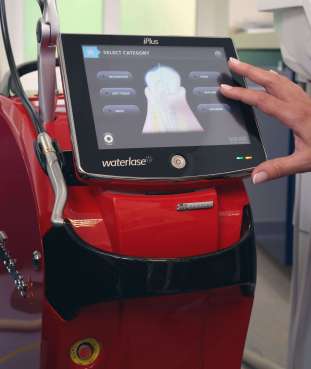
The primary advantage of Waterlase is that it reduces the trauma and pain associated with dental interventions, and thus, the fear level of our patients. Therefore we expressly recommend it to those who are particularly afraid of dental interventions.
It is primarily used for aesthetics and conservative treatments and oral surgeries, but other uses are also possible.
Most often Biolase Waterlase can be used without local anaesthesia (apart from a few exceptions, in which case we will inform you in advance.) Avoiding the injection can be, in itself, reassuring for the patient because many people are afraid of it when they have to go to the dentist. In case of surgeries and more serious interventions, even the use of the painkillers can be reduced or avoided, not to mention the swelling, bleeding or other discomfort.
There are those who are afraid of the dentist because they cannot stand the sound of the drill, which can be scary and frightful, leaving aside the negative experiences that it evokes. In addition, a traditional drill can also cause tissue injuries that may be completely avoided, and therefore the use of the laser is medically indicated, as well.
vissza a kérdésekhez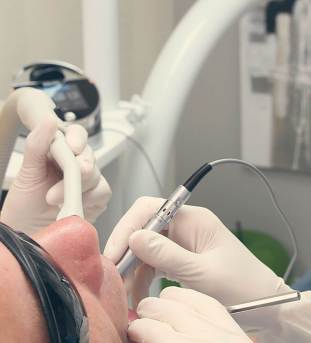
Relative to its size, Biolase Epic diode laser is a high energy system, which efficiently reduces pain and sensitivity.
The iLase diode laser, shown in the picture, is used for interventions similar to those described above, but it is even smaller. It can be held in the hand like a pen.
Diode lasers are most often used for whitening, root canal treatment, root canal disinfection, oral surgery interventions and aesthetic treatments.
Other uses: frenectomy, gum plasty, gum incision, haemostasis, implant release, oncotomy, opening the dentin, crown lengthening, healing of herpetic and aphthous lesions.
vissza a kérdésekhez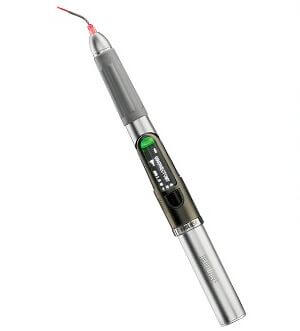
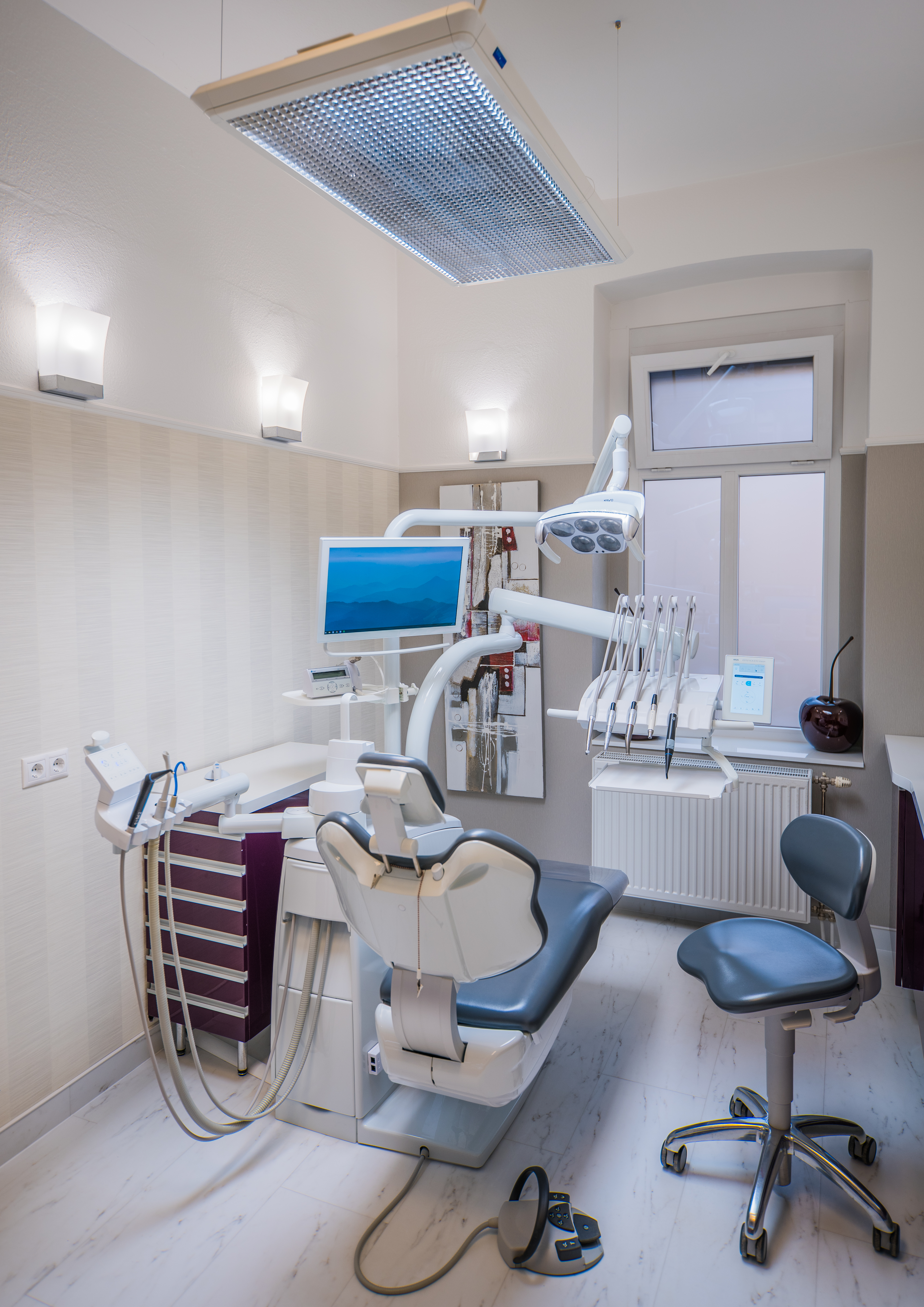
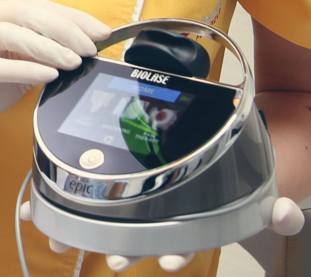
Laser filling practically means the removal of caries using a laser. Before applying a filling into the teeth, the carious parts will be removed using a drill. Using a laser beam, this process can be performed without pain and the scary sound because the laser makes only a popping sound. The video below shows how a cervical caries is removed without anaesthesia using a laser:
The greatest benefit of laser teeth drilling is perhaps that it does not deteriorate the healthy parts, and it removes only the carious parts. Thus, a larger part of the teeth is preserved than the traditional drilling. The filling material placed into the hole made with Biolase will adhere more strongly to the tooth because it forms a special sterile cross-linked structure.
Meanwhile the laser drilling will disinfect the place of the caries without using external materials or chemicals.
Please note that, unfortunately, previous fillings cannot be removed using a laser. Sometimes an anaesthetic may be used for a laser filling in order to improve the comfort of the patients. This will be decided on an individual basis.
vissza a kérdésekhezWhile teeth whitening using techniques that can be carried out at home or that are less sophisticated are able to lighten the teeth only a couple of nuances, laser whitening can be used to obtain a much lighter teeth colour.
Laser whitening takes far less time than other whitening techniques.
The entire whitening process takes only 20 minutes that is preceded by teeth cleaning and plaque removal.
The bio-laser is best able to stimulate the effect of the whitening gel.
Because it requires special and expensive equipment (diode laser), this procedure is accessible only in a few practices in Hungary (and particularly in Szeged).
Your teeth can stay white for many years by observing the relevant guidelines.
Click here to read more about our laser teeth whitening.
vissza a kérdésekhez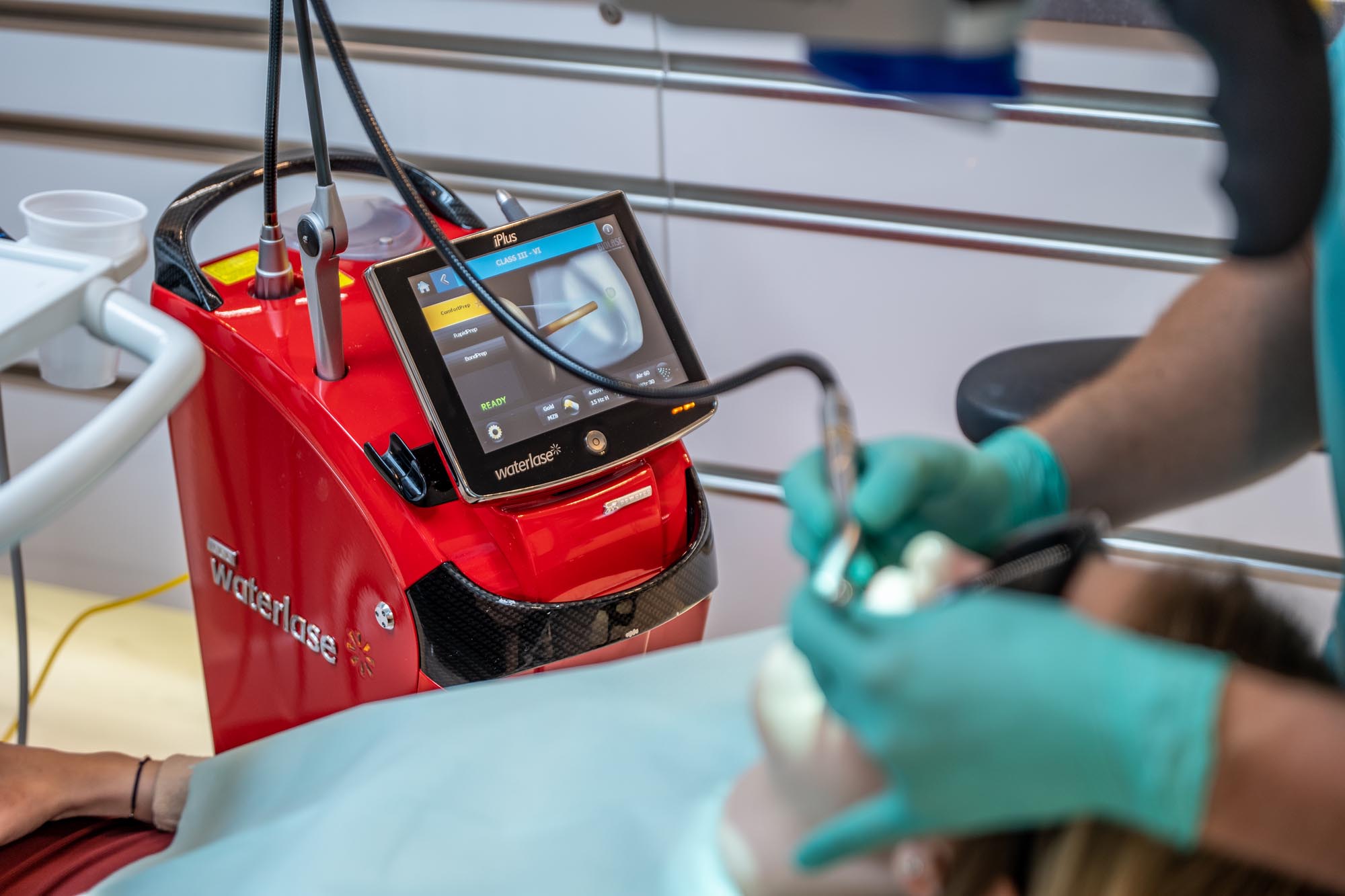
The useful life of teeth preserved by root canal treatment differs from that of live teeth. This is usually substantially shorter but in favourable situations they can fulfil their function for many years. For this reason, no dentist can provide guarantees for root canal treatments. This intervention is considered to be the only possible treatment to preserve a tooth, which can be successful in a significant proportion of the cases.
Laser root canal treatment is performed using the Biolase Waterlase iPlus equipment and the Epic 10 diode laser. The interior of the tooth, the pulp is removed using a special endodontic file. Due to its disinfecting effect, the laser beam perfectly cleans the root canals and vaporizes the bacteria, and thus, no new inflammation will occur and the life of the teeth will be significantly prolonged. You will be required to return fewer times for check-ups and you will spend far less time in the dentist chair.
The figure below shows the process of laser root canal treatment:
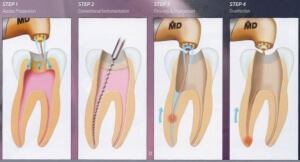
Steps of laser root canal treatment (source: Biolase iPlus brochure):
After spontaneous or, for example, traditional root canal treatment, sometimes an inflammatory change or foci may develop at the apex of the root. It is recommended to remove this part of the root in order to avoid complications.
The removal of the apex is called resection.
As with the traditional methods, when performing laser apicoectomy a small incision will be made on the gum through which the root apex and the inflamed tissue are removed.
For this procedure, anaesthesia will be used.
Compared to previous procedures, the difference is that, due to the disinfectant effect of the laser, healing is much faster and there is nothing to fear from reinfection.
Compared to other devices, a laser beam can be guided more precisely, wound edges heal faster and there is only minimal bleeding.
vissza a kérdésekhez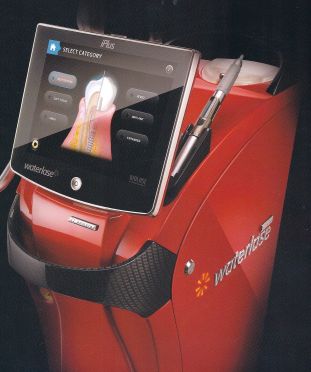
Our practice regularly performs oral laser surgeries. Any incision can be performed under more sterile conditions than with a scalpel because the laser beam immediately heals the wound edges, and since it heals the blood vessels, there is almost no bleeding.
Due to these sterile conditions, the healing time is shorter and postoperative pain is reduced.
All changes and growths in the oral cavity can be removed using the laser beam. The laser can be used in each phase of the implantation process in order to speed up healing.
The video below shows how an oral surgery is performed without bleeding using Biolase WaterLase:
vissza a kérdésekhezDr. Gábor Benedek, head of our practice, and Dr. András Halász, dentist, attended a laser implantology training in June 2017. The pictures show Dr. Gábor Benedek, assisting to Prof. Dr. Gilles P. Chaumanet, the Chairman of the French Society of Oral Laser Association. We treat our patients with the same type of WaterLase iPlus bio-laser which was used to perform the surgery.
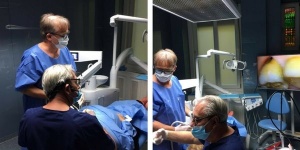
After the surgery, the patient in the picture wrote us the following letter:
“Dear Dr. Benedek,
Thank you for a painless surgery for which you used high-quality, even more, state-of-the-art laser equipment and microscope, as well as your expertise to help me with my first implant, during which I didn’t even notice that you had already removed my tooth. 🙂 I feel excellent. Thank you again.
I report that the usual swelling of the face didn’t occur. Yesterday Dr. Andrea Bella successfully removed the sutures and now my gum looks healthy and pink. And I have to thank you for your reassuring words during the surgery.
Best regards: M. K.”
vissza a kérdésekhez